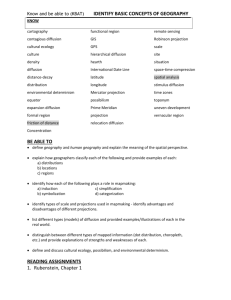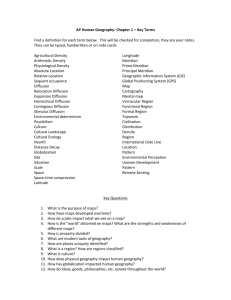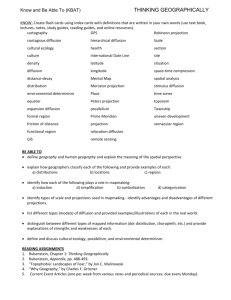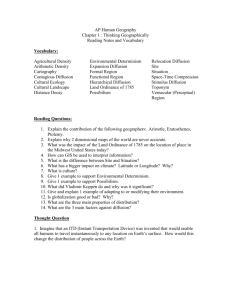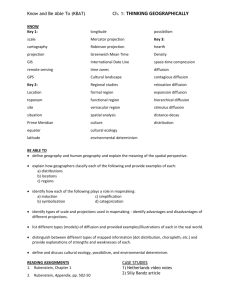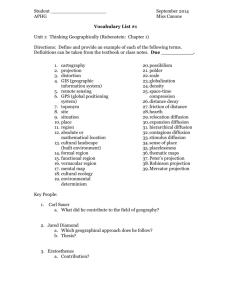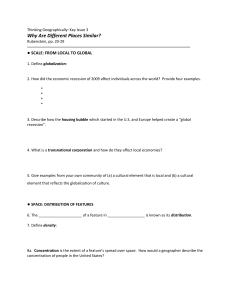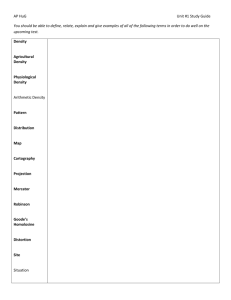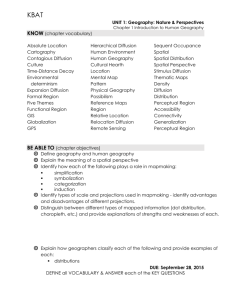Chapter 1 outline
advertisement
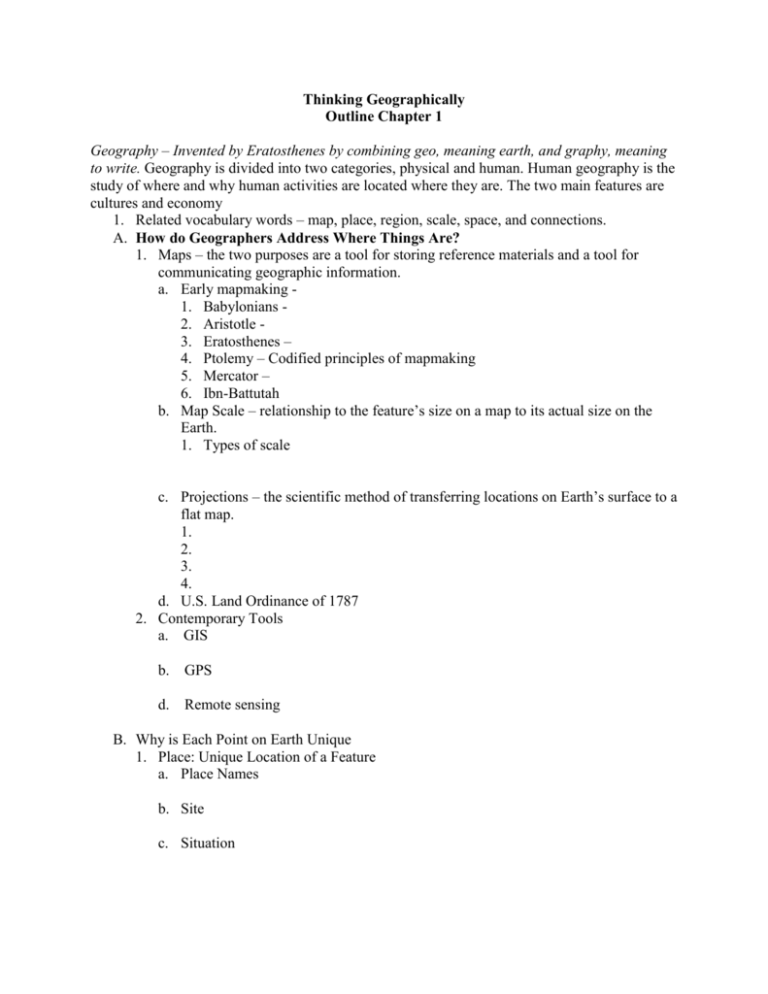
Thinking Geographically Outline Chapter 1 Geography – Invented by Eratosthenes by combining geo, meaning earth, and graphy, meaning to write. Geography is divided into two categories, physical and human. Human geography is the study of where and why human activities are located where they are. The two main features are cultures and economy 1. Related vocabulary words – map, place, region, scale, space, and connections. A. How do Geographers Address Where Things Are? 1. Maps – the two purposes are a tool for storing reference materials and a tool for communicating geographic information. a. Early mapmaking 1. Babylonians 2. Aristotle 3. Eratosthenes – 4. Ptolemy – Codified principles of mapmaking 5. Mercator – 6. Ibn-Battutah b. Map Scale – relationship to the feature’s size on a map to its actual size on the Earth. 1. Types of scale c. Projections – the scientific method of transferring locations on Earth’s surface to a flat map. 1. 2. 3. 4. d. U.S. Land Ordinance of 1787 2. Contemporary Tools a. GIS b. GPS d. Remote sensing B. Why is Each Point on Earth Unique 1. Place: Unique Location of a Feature a. Place Names b. Site c. Situation d. Mathematical Location 1. Determining Longitude 2. Telling time from longitude –GMT and International Date Line Regions: Areas of Unique Characteristics – Carl Sauer, Robert Platt 1. Cultural landscape – a combination of cultural features such as language and religion, economic features such as agriculture and industry, and physical features such as climate and vegetation. An area fashioned by nature by a cultural group. 2. Types of regions a. Formal region b. Functional region c. Vernacular region 3. Spatial Association 4. Regional Integration of Culture a. What people care about b. What People take care of 5. Cultural Ecology: Integrating Culture and Environment – the importance given to the relationship between culture and the natural environment. The study of this relationship is called Cultural Ecology a. Human and Physical Factors –possibilism – b. Physical processes: Climate c. Physical processes: vegetation d. Physical processes: Soil e. Physical processes: Landforms f. Sensitive Environmental Modifications: Netherlands g. Not-So-Sensitive Environmental Modification: Florida Why Are Different Places Similar? A. Scale: From Local to Global – globalization – transnational corporations 1. Globalization of Culture B. Space: Distribution of Features 1. Distribution a. Density – b. Concentration c. Pattern 2. Gender and Ethnic Diversity in Space C. Connections between Places – space-time compression 1. Spatial Interaction 2. Diffusion – hearth a. Relocation diffusion b. Expansion diffusion c. Hierarchical diffusion d. Contagious diffusion e. Stimulus diffusion f. Diffusion of Culture and Economy
